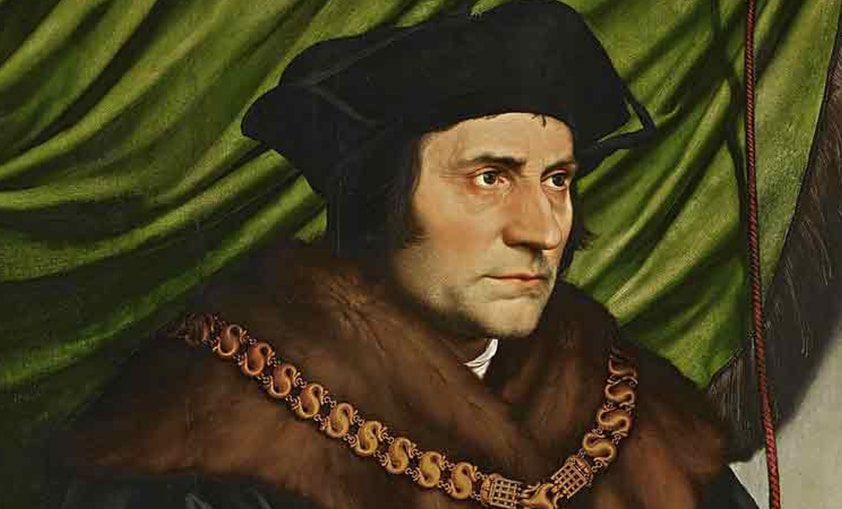Whenever we turn to a trusty compilation of saint biographies, we’re pretty likely to find plenty of examples of holiness in the convent and the priesthood. All well and good, but when we’re hoping for someone who might seem a little more familiar to our situation as Catholics living in a secular world, sometimes it’s a bit of a longer search.
That’s one of the reasons I’ve always felt an attraction to the life of St. Thomas More. A layman, a father and a husband, and a lawyer of all things.
Who says you can’t be holy in a profession that is widely considered for corrupt people? Because not only did Thomas More live a life of holiness in his station, he even had the courage to oppose a wayward king who was also a friend, even all the way to martyrdom.
An Early Life Pointing to Greatness
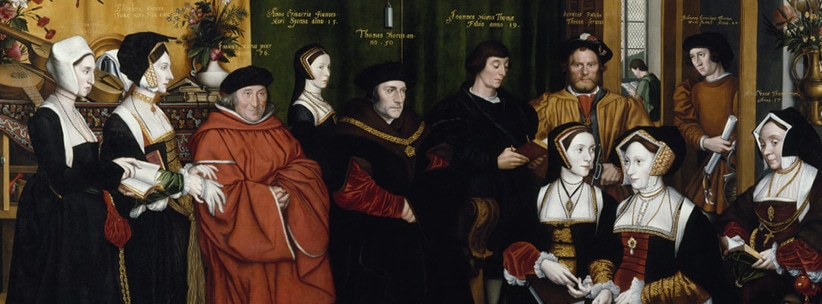
St. Thomas More was born in 1478 to Sir John More who was a prominent lawyer and eventually a judge. Thomas had five siblings and attended one of London’s best schools. As a young adolescent, he served as a household page to the Archbishop of Canterbury, who thought he had great potential and nominated him for a place at Oxford.
After two years at Oxford, Thomas left to begin training as a lawyer. But despite his promising future career, More longed for the spiritual richness of religious life and seriously considered becoming a monk. He even lived in close proximity to a Carthusian monastery for some time and would regularly join in their prayer life.
But though this life did attract him, Thomas decided to continue on in the lay path he had begun, becoming not only a lawyer but a member of Parliament shortly after that spurt of time near the monks, in 1504.
A Lay Life of Holiness
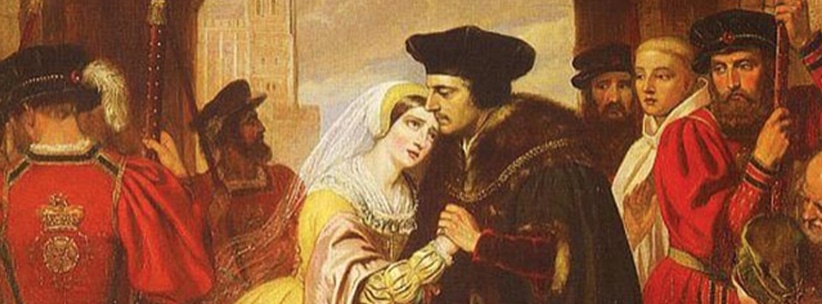
Thomas married a woman named Jane Colt, and the two had a happy but brief marriage, lasting only six years until she died in 1511. They had four children.
After her death, in a move that seemed strange to many of his acquaintances, More remarried very quickly. He married a widow named Alice Harpur Middleton, who had a daughter of her own. Thomas cared for her daughter as his own, but the two never had any additional children. More was an affectionate father and actually insisted on educating his daughters in the same manner as his son, which wasn’t typical in that day and age.
In his daily life, he continued on in the ascetic practices he’d been attracted to in religious life. And after his death, it was discovered that he wore a hair shirt.
Political Prominence, and a Difficult Position
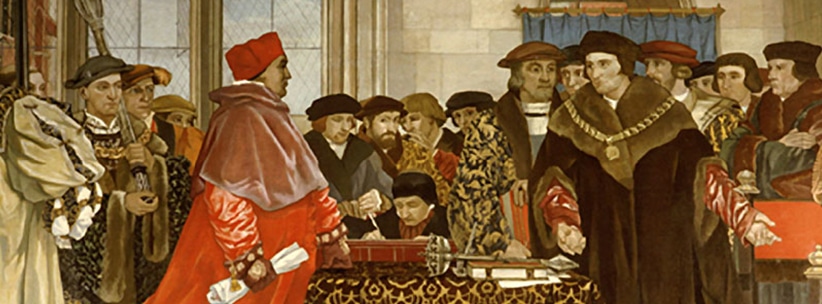
After being elected to Parliament, More rose in honor and prominence. He gained a reputation for honesty, and for being good at what he did. He eventually became a secretary and advisor to King Henry VIII. He was knighted, became the Speaker for the House of Commons, and became Lord Chancellor in 1529.
It was during his time as Chancellor that things began to get difficult. Henry VIII was coming into conflict with Catholic leaders over his desire to break his marriage with his first wife Catherine. In 1530, Thomas More refused to sign a letter on the king’s behalf to the Pope that would ask for the marriage to be annulled (since Thomas knew, as most people did, that it was a perfectly valid marriage).
Then the king decided to declare himself head of the Church of England, bringing England into schism. The king tried to force all the clergy to sign an oath to him as the Church’s supreme head. He requested More to sign as well. And More refused.
More soon resigned as Chancellor, when it became clear to him that he could not continue to be put in such an impossible position of supporting the king in immoral actions, as he himself firmly supported the Pope in the clash between Pope and king. And yet, the king was fond enough of Thomas that he still did not attack him or attempt to get rid of him. Yet.
Final Downfall and Martyrdom
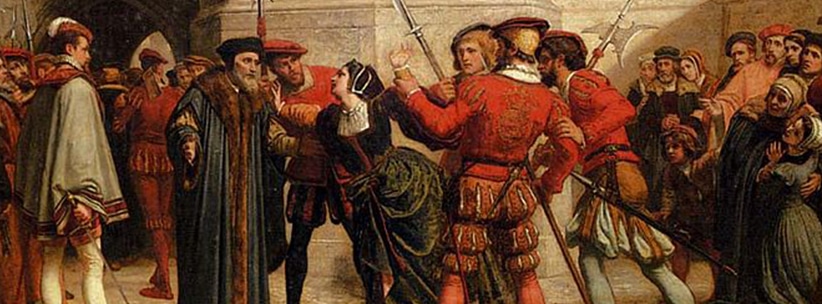
It was only after More refused to attend the coronation of Henry’s new queen Anne that Henry began to try and get More out of the picture.
The king first tried to trump up charges of bribery, but Thomas was just too darn honest for any believable proof to be found. Henry then tried to trump up charges of treason, but that failed too, initially.
Finally, Henry tried to force Thomas to sign a document acknowledging that Anne’s children would be heirs to the throne. And since the beginning of the document said that Henry’s authority was above the Pope’s, Thomas refused to sign. It was a strong enough act of opposition to bring about Thomas’ execution.
Thomas More could have, pretty easily, went along with Henry’s plans to separate from the Church. He could have lied, pretended he was okay with evil. But instead, he went against what every other person in his social circle was doing and stayed fast in the truth, all the way until death.
Thomas More is the patron of adopted children, difficult marriages, and lawyers, among other things. Personally, I think he should be a patron of comedians as well, since legend has it that he told his executioner to be careful not to chop his beard – after all, he said, his beard hadn’t committed treason!
As we strive to grow on our paths of holiness that are typically very much in the world and are often even amidst widespread immorality and corruption, let us turn to St. Thomas More as our special patron and friend.
